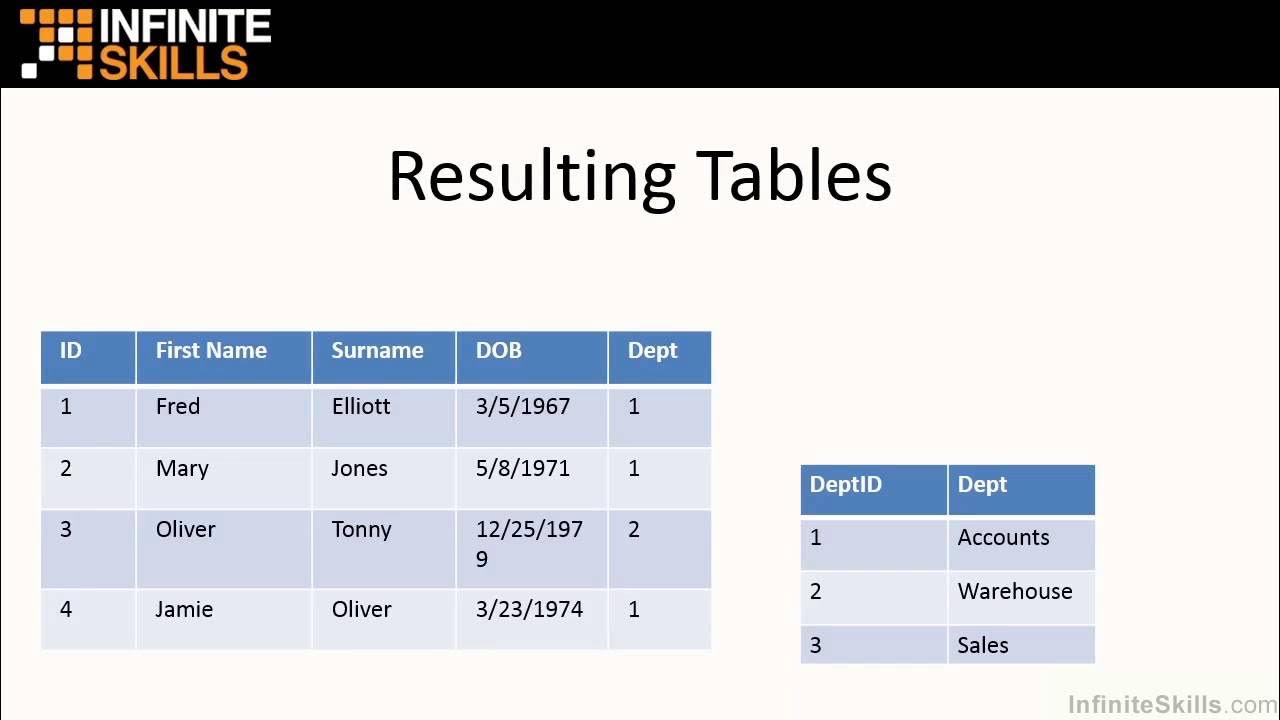#M04A04 - MODELAGEM DE RELACIONAMENTOS
Summary
TLDRIn this video, the speaker explains the concept of relationships in relational databases, focusing on how entities in a system interact through tables. Using a school database as an example, the speaker covers three main types of relationships: one-to-one, one-to-many, and many-to-many. The video demonstrates how these relationships are mapped and the importance of normalization in database modeling. The speaker also challenges the viewer to consider how different entities, like subjects and books, relate to each other in a real-world scenario, highlighting the importance of adapting relationships to the specific needs of the system being modeled.
Takeaways
- 😀 A relational database focuses on the relationships between different entities (like students, teachers, and classes).
- 😀 There are three main types of relationships in relational databases: one-to-one, one-to-many, and many-to-many.
- 😀 A one-to-one relationship occurs when one entity is related to exactly one other entity, such as a student having one registration record.
- 😀 A one-to-many relationship happens when one entity is associated with many others, such as a class having many students.
- 😀 A many-to-many relationship occurs when multiple instances of two entities can be related, like students having many teachers and vice versa.
- 😀 Foreign keys are used to establish relationships between tables, with one table's foreign key referencing another table's primary key.
- 😀 When creating a many-to-many relationship, an auxiliary table is often needed to manage the connection between the two entities.
- 😀 Data normalization is crucial in database design and helps avoid redundancy by splitting related information into separate tables.
- 😀 Relationships in database modeling should reflect real-world scenarios, and their design depends on the specific requirements of the system being modeled.
- 😀 The relationship between 'discipline' and 'book' can vary, with it being one-to-one, one-to-many, or many-to-many, depending on the school system.
- 😀 Understanding and practicing these relationships is key to creating efficient and functional relational databases.
Q & A
What is the main focus of the video?
-The video focuses on explaining different types of relationships in relational database modeling, specifically one-to-one, one-to-many, and many-to-many relationships, using a school database as an example.
What does the term 'relational' imply in relational databases?
-The term 'relational' refers to the connections or relationships between tables in the database, where data is organized into entities that are linked together in meaningful ways, like the relationship between students and enrollments.
What is a one-to-one relationship? Can you give an example?
-A one-to-one relationship is when each entry in one table is linked to exactly one entry in another table. An example is the relationship between a 'Student' and 'Enrollment', where each student has exactly one enrollment and each enrollment is for exactly one student.
How is a one-to-many relationship different from a one-to-one relationship?
-In a one-to-many relationship, one entry in a table can be linked to multiple entries in another table. For example, one 'Class' can have many 'Students', but each 'Student' belongs to only one 'Class'.
What is a many-to-many relationship? Can you provide an example?
-A many-to-many relationship occurs when multiple entries in one table are related to multiple entries in another table. An example is the relationship between 'Students' and 'Teachers', where each student can have many teachers and each teacher can have many students.
Why do many-to-many relationships require an auxiliary table?
-Many-to-many relationships require an auxiliary table because directly linking two tables with a many-to-many relationship would create redundancy and data integrity issues. The auxiliary table stores the pairing of entries from both tables, like linking 'Students' to 'Teachers' via a separate table.
What does the speaker suggest about normalizing data in a relational database?
-The speaker suggests that data normalization is important for reducing redundancy and organizing data in an efficient way. Normalization helps manage many-to-many relationships by creating auxiliary tables to map connections between entities without duplicating data.
What tool is used in the video to visualize the database model?
-The speaker uses Visual Paradigm Online, a tool that allows users to create and visualize database models, including entity-relationship diagrams.
What challenge does the speaker pose to the viewers regarding the 'Discipline' and 'Book' tables?
-The speaker asks viewers to consider the relationship between 'Discipline' (Subject) and 'Book', suggesting that it could vary depending on the school. It could be a one-to-one relationship if each subject has exactly one book, a one-to-many relationship if a subject has multiple books, or even a many-to-many relationship if one book is used across multiple subjects.
What is the importance of correctly defining relationships in a relational database?
-Correctly defining relationships in a relational database is crucial because it ensures data integrity, reduces redundancy, and enables efficient querying and data retrieval. Understanding relationships helps in accurately modeling the real-world scenario the database represents.
Outlines

Dieser Bereich ist nur für Premium-Benutzer verfügbar. Bitte führen Sie ein Upgrade durch, um auf diesen Abschnitt zuzugreifen.
Upgrade durchführenMindmap

Dieser Bereich ist nur für Premium-Benutzer verfügbar. Bitte führen Sie ein Upgrade durch, um auf diesen Abschnitt zuzugreifen.
Upgrade durchführenKeywords

Dieser Bereich ist nur für Premium-Benutzer verfügbar. Bitte führen Sie ein Upgrade durch, um auf diesen Abschnitt zuzugreifen.
Upgrade durchführenHighlights

Dieser Bereich ist nur für Premium-Benutzer verfügbar. Bitte führen Sie ein Upgrade durch, um auf diesen Abschnitt zuzugreifen.
Upgrade durchführenTranscripts

Dieser Bereich ist nur für Premium-Benutzer verfügbar. Bitte führen Sie ein Upgrade durch, um auf diesen Abschnitt zuzugreifen.
Upgrade durchführen5.0 / 5 (0 votes)






